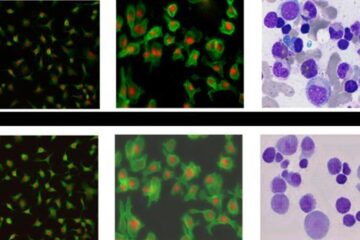Molecules can block breast cancer's ability to spread

MicroRNAs are known to inhibit the activity of entire sets of genes associated with cancer metastasis – a process that leads to the majority of cancer-related deaths. The new work explains how the loss of certain microRNAs allows cancer cells to migrate through organ tissue and to grow more rapidly.
The researchers examined human breast cancer cells with strong metastatic ability and found that the cells had lost large numbers of three different microRNA molecules. Conversely, when researchers put those molecules back into human breast cancer tumors in mice, the tumors lost their ability to spread.
In addition, the researchers looked at breast cancer patients and discovered that those with tumors that had lost these molecules were much more likely to suffer from cancer metastasis to the lung and bone.
“The identification of molecules that inhibit a cell’s metastatic potential may help guide clinical decision-making in the future by enabling oncologists to more accurately identify patients at highest risk for metastatic relapse,” said the study’s lead author Sohail Tavazoie, MD, PhD, a postdoctoral fellow in the Oncology-Hematology Fellowship program at MSKCC.
In further analyzing one of these microRNAs, called miR-335, investigators found that miR-335 works by suppressing certain genes that are associated with human metastasis, particularly SOX4, which acts as a transcription factor (meaning that it regulates a group of genes responsible for cell development and migration), and tenascin-C, which functions outside the cell in what is called the extracellular matrix and is implicated in cell migration.
“We now have a better understanding of the role this molecular pathway plays as a suppressor of breast cancer’s ability to spread to the lung and bone, and we have identified the genes involved in that process. These findings may enhance our ability to come up with more effective drugs to prevent or treat cancer metastasis,” said Joan Massagué, PhD, Chair of the Cancer Biology and Genetics Program at MSKCC, a Howard Hughes Medical Institute Investigator, and the study’s senior author.
Media Contact
More Information:
http://www.mskcc.orgAll latest news from the category: Life Sciences and Chemistry
Articles and reports from the Life Sciences and chemistry area deal with applied and basic research into modern biology, chemistry and human medicine.
Valuable information can be found on a range of life sciences fields including bacteriology, biochemistry, bionics, bioinformatics, biophysics, biotechnology, genetics, geobotany, human biology, marine biology, microbiology, molecular biology, cellular biology, zoology, bioinorganic chemistry, microchemistry and environmental chemistry.
Newest articles

Bringing bio-inspired robots to life
Nebraska researcher Eric Markvicka gets NSF CAREER Award to pursue manufacture of novel materials for soft robotics and stretchable electronics. Engineers are increasingly eager to develop robots that mimic the…

Bella moths use poison to attract mates
Scientists are closer to finding out how. Pyrrolizidine alkaloids are as bitter and toxic as they are hard to pronounce. They’re produced by several different types of plants and are…

AI tool creates ‘synthetic’ images of cells
…for enhanced microscopy analysis. Observing individual cells through microscopes can reveal a range of important cell biological phenomena that frequently play a role in human diseases, but the process of…





















